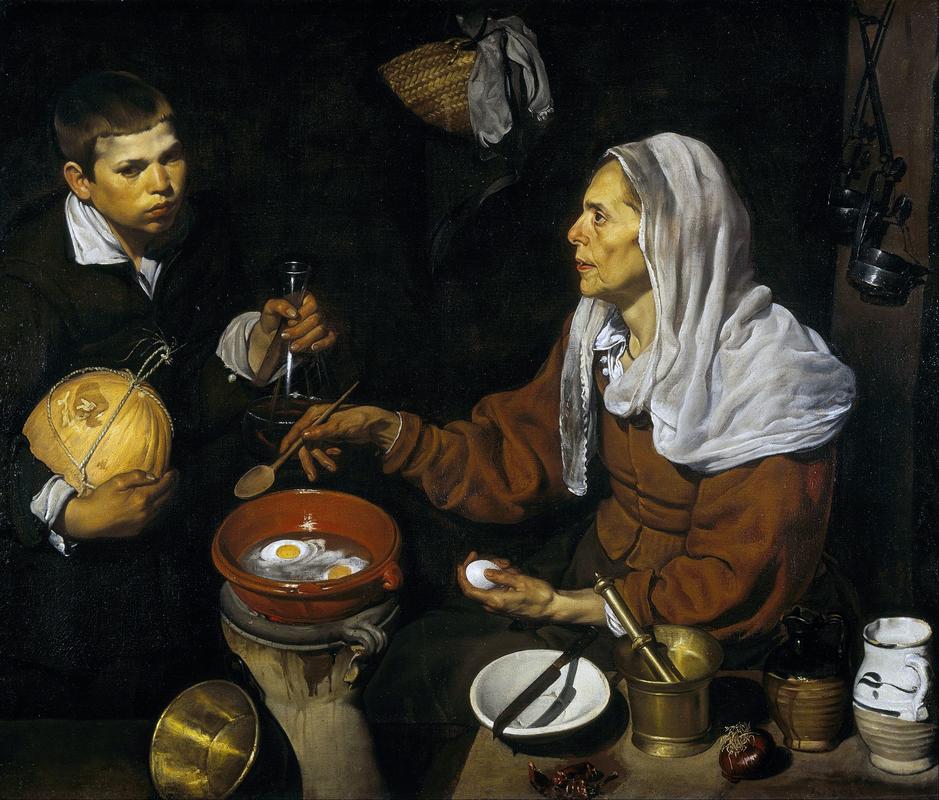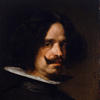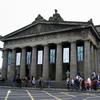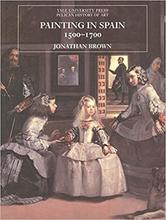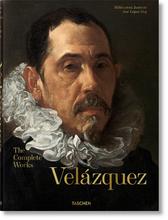More about An Old Woman Cooking Eggs
- All
- Info
- Shop
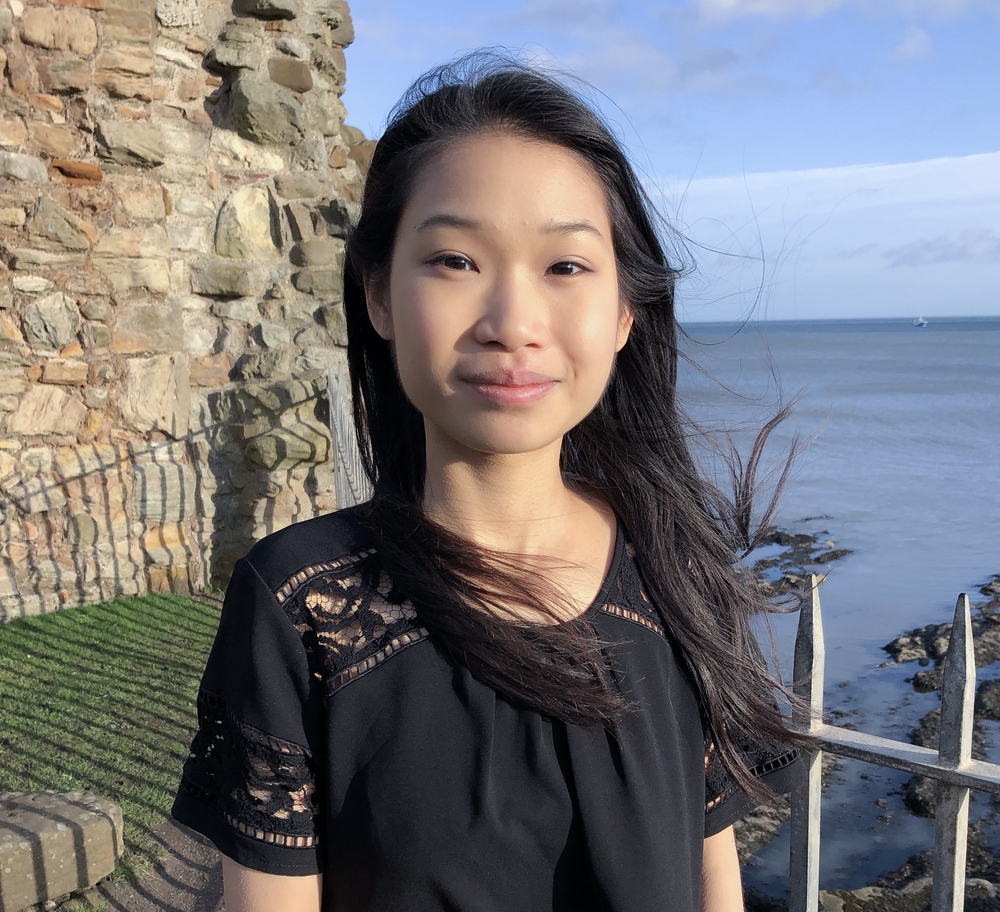
Sr. Contributor
Velazquez claims his part in the Pacheco family in Old Woman Cooking Eggs.
Before Diego Velazquez made it big as the court painter to King Philip IV, he painted bodegons. Derived from the word bodega, meaning tavern, bodegon paintings are a class of genre paintings that feature still-life kitchen elements. His contemporaries criticized his choice in subject as still-life paintings were regarded as the lowest on the hierarchy of tastes as the everyday objects were seen as unworthy. In response, he stated, "I would rather be the first painter of common things, than second in higher art."
This statement in a way is a contradiction of his most illustrious piece, Las Meninas, the epitome of noble art. Instead of using the subject of the piece to elevate his status as an artist, he simply recreates the “common things” in incredible likeness. His bodegons were more a statement about his skill as an artist than his position.
He painted bodegons during his Seville period, and one of his earliest was An Old Woman Cooking Eggs. The method of preparation of the eggs is a hotly debated issue and this painting is also holds two alternative titles–An Old Woman Frying Eggs and An Old Woman Poaching Eggs. Some argue that it is being fried, explaining (or rather egg-splaining) the wooden spoon on the side preventing it from sticking, while others believe that it is being poached, perhaps in a garlic soup.
In Seville, Velazquez studied under artist Francisco Pacheco, who was a stickler for convention and correct representations of religious subjects in contrast with Raphael’s Neoplatonic idealism. Imitation is the sincerest form of flattery, and Velazquez takes a nod from his teacher, employing careful realism in his paintings, which can be seen in An Old Woman Cooking Eggs. This gesture was not unnoticed and Pachero spoke highly of Velazquez, saying, “Bodegons not to be esteemed? Of course they are, if as my son-in-law paints them, elevating them beyond all comparison, and they deserve very high praise indeed, for in these beginnings and portrait...he has found true imitation in nature.” Although Pacheco was considered a mediocre Mannerist, he was described as the “Vasari of Seville” due to his book, the Art of Painting, in which he analyzed paintings and critiqued artists, creating rules for how and what they should paint, earning him the reputation of being the artistic dictator of Andalusia. Kind of like an early-modern Perez Hilton.
Influences from Pacheco do not stop there. In 1618, the date that Velazquez painted An Old Woman Cooking Eggs, Velazquez married Juana Pacheco, the only child of his teacher and then used her mother’s face as a model for this painting and for Martha in Christ in the House of Martha and Mary. He paints her in full #nofilter fashion. Although his model may have been his mother-in-law and his intention might have been to immortalize her egg-cellent cooking abilities (and her signature egg soup), he does not spare her of any of the realism that Pacheco advocated for, depicting every face and hand wrinkle in careful detail. However, the eggs (that are probably organic, non-GMO, cage-free and person harvested by your local Joe from Whole Foods from a chicken that is fed a gluten-free diet) get the full Facetune treatment, shown sunnyside up with perfectly round and bright yellow yolks.
Sources
- Casal, Marta Cacho. "The Old Woman in Velázquez's Kitchen Scene with Christ's Visit to Martha and Mary." Journal of the Warburg and Courtauld Institutes 63 (2000): 295-302.
- Freedberg, David, Leo Steinberg, and John F. Moffitt. "Pacheco, Nadal, and Velázquez." The Art Bulletin 73, no. 3 (1991): 503-07.
- Lubbock, Tom. "Velazquez, Diego: An Old Woman Cooking Eggs (1618)." The Independent. October 22, 2011. Accessed June 18, 2019.
- Moffitt, John F. "Francisco Pacheco and Jerome Nadal: New Light on the Flemish Sources of the Spanish "Picture-within-the-Picture"." The Art Bulletin 72, no. 4 (1990): 631-38.
- Pérez Sánchez, Alfonso E and Julián Gállego, eds. Velázquez. Metropolitan Museum of Art Publications, 1989. Accessed June 2, 2019.
- Thacher, John S. "The Paintings of Francisco De Herrera, The Elder." The Art Bulletin 19, no. 3 (1937): 325-80.
Featured Content
Here is what Wikipedia says about Old Woman Frying Eggs
Old Woman Frying Eggs is a genre painting by Diego Velázquez, produced during his Seville period. The date is not precisely known but is thought to be around the turn of 1618 before his definitive move to Madrid in 1623. The painting is in the Scottish National Gallery in Edinburgh. Velázquez frequently used working-class characters in early paintings like this one, in many cases using his family as models; the old woman here also appears in his Christ in the House of Martha and Mary (1618). There is some dispute about what cooking process is actually depicted with some suggesting not frying but poaching, leading to an alternative title of the painting, Old Woman Cooking Eggs or Old Woman Poaching Eggs.
Old Woman Frying Eggs is considered to be one of the strongest of Velázquez's early works. Like others, it shows the influence of chiaroscuro, with a strong light source coming in from the left illuminating the woman, her utensils and the poaching eggs, while throwing the background and the boy standing to her right into deep shadow. Here the chiaroscuro is very intense, so much so that it would be impossible to see the wall at the bottom of the painting but for the basket hanging from it; it simultaneously manages to combine the murky darkness and high contrasts of light and shadow with the use of subtle hues and a palette dominated by ochres and browns. The composition is organised as an oval with the middle figures in the nearest plane, thus drawing in the viewer.
The realism is nearly photographic and shows everyday plates, cutlery, pans, pestles, jugs and mortars, capturing the special shine on a glass surface and the light's play on the melon carried by the boy. The boiling pan is particularly well-captured, with its reflections and the whites of the eggs. Velázquez also worked particularly hard on the detail of the two figures' hands.
Check out the full Wikipedia article about Old Woman Frying Eggs

